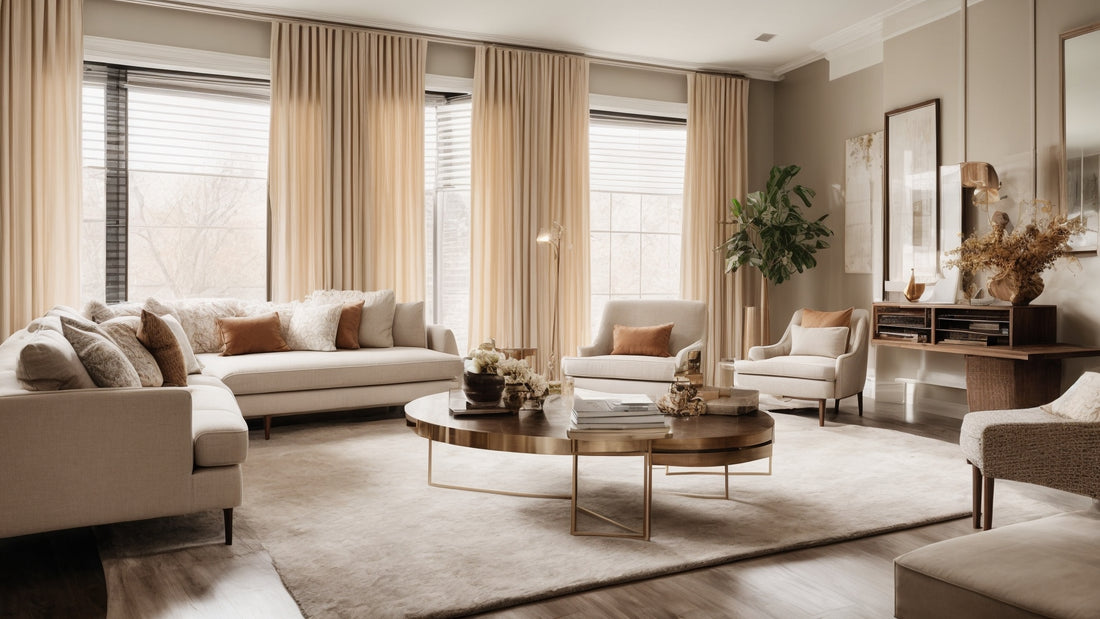Introduction
When it comes to home styling, finding the perfect balance between modern and traditional elements can be a daunting task. However, transitional home styling offers a solution that combines the best of both worlds. This design approach allows you to create a space that is both timeless and contemporary, resulting in a harmonious and inviting atmosphere.
The Basics of Transitional Home Styling
Transitional home styling is all about blending modern and traditional design elements. It focuses on clean lines, neutral color palettes, and a mix of materials and textures. The goal is to create a space that feels comfortable, yet sophisticated.
Choosing the Right Furniture
In transitional home styling, furniture plays a crucial role. Look for pieces that have a classic silhouette but with a modern twist. Opt for clean lines, smooth curves, and avoid ornate details. A neutral color palette for furniture upholstery allows for versatility and can easily be paired with bold accents. Incorporate furniture made from different materials like wood, metal, and glass to add visual interest and depth to the space.
Color Palette and Textures
Neutral color schemes are a staple in transitional home styling. Shades of beige, gray, and cream create a soothing backdrop that allows other design elements to shine. However, don't be afraid to introduce pops of color through accessories or accent furniture. When it comes to textures, combine a variety of materials like plush fabrics, smooth surfaces, and natural elements to add depth and visual interest to the space. Mix textures through rugs, curtains, and throw pillows to create a cozy and inviting atmosphere.
Lighting to Set the Mood
The right lighting can enhance the ambiance of a transitional home. Incorporate a mix of lighting options, including overhead fixtures, task lighting, and accent lighting. Consider pendant lights with a modern design, table lamps with classic shapes, and wall sconces to provide a warm and inviting atmosphere. Dimmer switches can also help create a cozy ambiance that can easily transition from day to night.
Accessorizing with Style
Accessories are the finishing touches that bring a transitional home together. Choose a few statement pieces that combine the sleekness of modern design with the sophistication of traditional elements. Avoid clutter and focus on quality over quantity. Incorporate art, mirrors, and decorative objects that reflect your personal style and tie the room together. Additionally, layering textures through rugs, curtains, and throw pillows can add depth and coziness to the space.
Creating Open and Airy Spaces
Transitional home styling often prioritizes open and airy spaces. Avoid heavy drapes and opt for sheer curtains or blinds that allow natural light to filter through. Arrange furniture in a way that promotes easy flow and conversation. Use mirrors strategically to reflect light and create an illusion of more space. Minimalism is key in transitional design, so keep surfaces clutter-free and embrace negative space.
Blending Modern and Traditional Architectural Features
If your home has architectural features that lean more towards traditional or modern design, don't worry. Transitional home styling can still work for you. Embrace the existing architectural elements and complement them with furniture and accessories that bridge the gap between the two styles. For example, if you have a traditional fireplace, pair it with a sleek and modern entertainment center.
Bringing Nature Indoors
Transitional home styling often incorporates elements of nature to create a sense of balance and harmony. Introduce houseplants or fresh flowers to add life and freshness to the space. Use natural materials like rattan or jute in furniture or accessories to bring an organic feel. Large windows that allow for a connection with the outdoors are also a great addition to a transitional home.
Personalizing the Space
While transitional home styling follows certain design principles, it is important to personalize the space to reflect your own taste and personality. Display family photos, artwork, or sentimental objects that hold meaning to you. Incorporate elements that showcase your hobbies or interests. The key is to create a space that feels like home and resonates with you on a personal level.
Conclusion
Transitional home styling is a versatile and timeless approach that allows you to create a space that combines the best of modern and traditional design. By carefully selecting furniture, utilizing a neutral color palette, incorporating a mix of textures, paying attention to lighting and accessories, creating open and airy spaces, blending architectural features, bringing nature indoors, and personalizing the space, you can achieve a perfect blend that will make your home both stylish and inviting.
Whether you are starting from scratch or looking to update your current space, transitional home styling offers endless possibilities to create a harmonious and visually appealing environment that stands the test of time.

